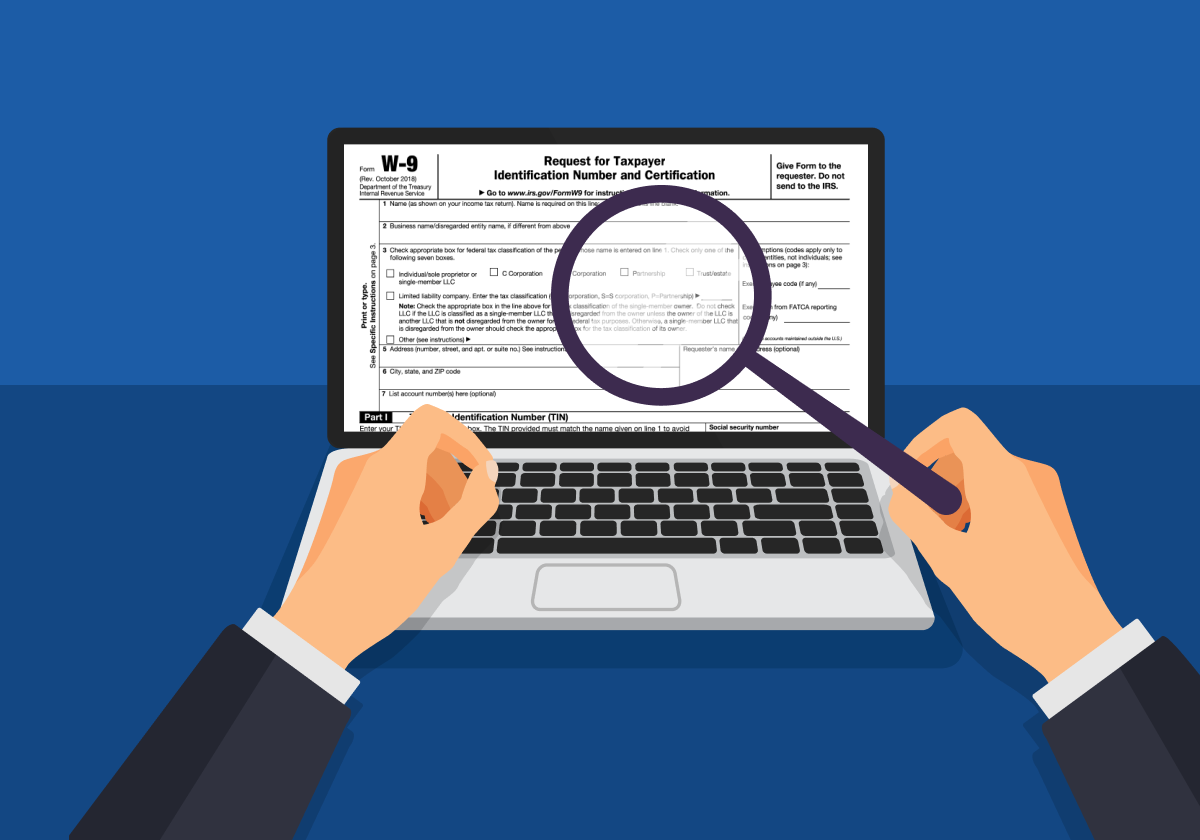Do you know a study conducted by payroll software provider Gusto in 2022, found that 34% of businesses said they had experienced fraud related to W-9 forms. This included instances where contractors had provided fake or stolen Social Security numbers, as well as cases where businesses had simply not verified the information on the forms.
And failure to verify W-9 information can have several negative consequences for organizations. For example, it can lead to:
- Tax penalties: The IRS requires businesses to collect and verify W-9 forms from all independent contractors they pay $600 or more per year. If a business fails to do this, it may be subject to tax penalties.
- Inaccurate tax reporting: If a business does not verify W-9 information, it may incorrectly report its tax liability. This can lead to additional taxes and penalties down the road.
- Fraud: W-9 fraud is a growing problem, and businesses that fail to verify W-9 information are at increased risk of being targeted. Fraudsters may use fake or stolen Social Security numbers to collect payments from businesses, or they may create fake W-9 forms to claim tax refunds.
Now that you understand the importance of verifying the w9 information let’s understand how to verify it accurately.
Ensuring the accuracy of information on IRS W-9 forms is crucial for various reasons. Let’s go over the key validations you should perform:
Legal Name & Tax ID
1. IRS Tin Match: To avoid discrepancies with IRS records and the associated penalties, cross-verify the Legal Name and Tax ID on the W-9 form with IRS records using an online service or directly with the IRS themselves.
2. IRS Exempt Organization: For non-profit recipients, it’s essential to check if they are registered as a tax-exempt organization with the IRS after performing the IRS TIN Match.
3. Duplicate Vendor Check: If you work with multiple Accounting Systems/ERPs, search for duplicate vendors across all systems using Legal Name, Tax ID, and address. This helps prevent duplicate payments.
4. System of Award Management (SAM): Government entities and organizations receiving federal funding should search the exclusion list using the Legal Name. It’s prohibited to award contracts to entities on this list.
5. Death Master File Check: Sometimes you may be provided a valid name and Tax ID combination but it is associated with a deceased person. This is a somewhat difficult scam to find as the IRS will provide you with a positive Name/TIN match result. To catch these, you can use a vendor that can complete a Death Master File (DMF) verification for you along with a TIN check to be sure that the person you are paying is not registered as deceased.
6. OFAC/Specially Designated Nationals (SDN) List: Check the Legal Name against the OFAC/SDN List. If any vendors appear in the search results, refrain from setting them up in the vendor master file, as it’s prohibited for US entities to do business with them. Notify leadership for further verification.
Address Verification
1. USPS: Ensure the validity and standardization of addresses for error-free delivery for the US addresses handled by USPS.
2. Third-Party Tools: Similar to USPS but with added benefits. there are a few third-party tools like Smarty Streets that verify addresses and provide status information, such as whether an address is vacant, inactive, or a PO Box. It helps prepare and send out forms like 1099s/1042s for both US and non-US addresses.
3. Electronic solicitations: Electronic solicitations have become a pivotal tool for companies seeking a streamlined and efficient means of meeting their regulatory obligations. Leveraging platforms like Tax1099 can significantly enhance your outreach strategy, making the process of electronically delivering forms to recipients and complying with the requirements seamless, effective, and cost-effective.
Now that you know how to verify W-9 information, it is time to understand when your business should request a W-9 form.
When Must Vendors Complete a W-9 Form?
Vendors should provide a W-9 to businesses anytime their Form W-9 information changes as well as when they are onboarded as a new supplier. Changes in the vendor’s name (business name or person’s legal name, if applicable), address, and Taxpayer Identification Number (TIN) are a few examples of changes to information that may drive the need for a new W9 record on file. When a vendor’s legal company structure changes, it is best to collect a new W-9.
It should be noted that the vendor submits a W-9 form before knowing the entire amount paid within a calendar year. If the total amount paid for the calendar year was less than $600, the supplier may submit Form W-9 to the payer without subsequently receiving a Form 1099-MISC or 1099-NEC. The $600 threshold is only for the obligation to create a tax form and any form for any amount may be provided to the IRS at the discretion of the payer.
Get the W-9 documents as soon as you can. Obtaining an initial Form W9 from suppliers later on could be more difficult, especially if the supplier is no longer doing business with the payer.
If you received a CP2100 or a CP2100A from the IRS you may be required to request new W-9 forms from your tax form recipients. These forms are typically referred to as a B-Notice letter and represent notification from the IRS that your information provided is incorrect or does not match their records. When these are received you are obliged to either collect correct information (usually with a W9) or immediately begin withholding on payments to the vendor and remitting that money to the IRS.
Related article: How Often Should a W-9 be Updated?

